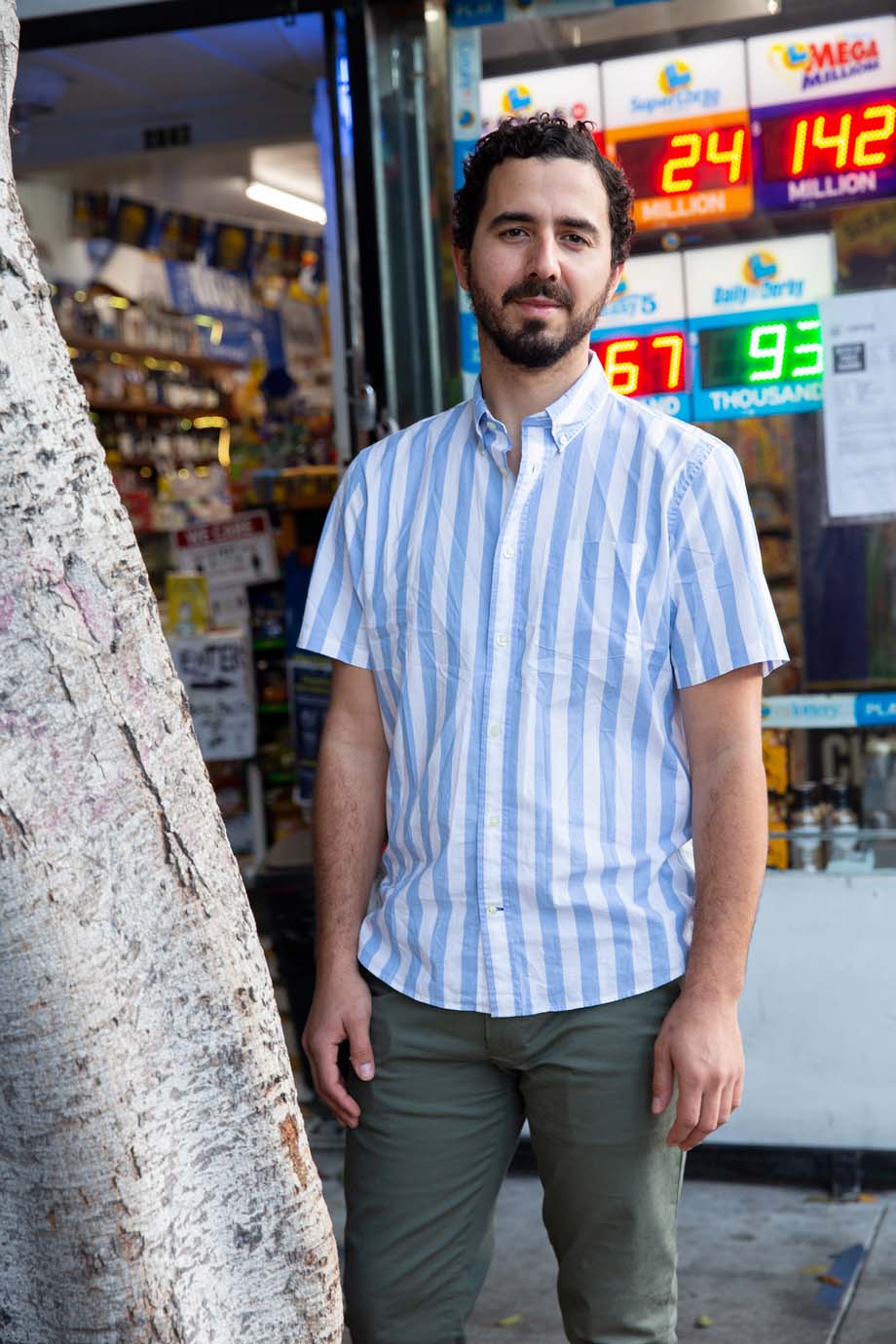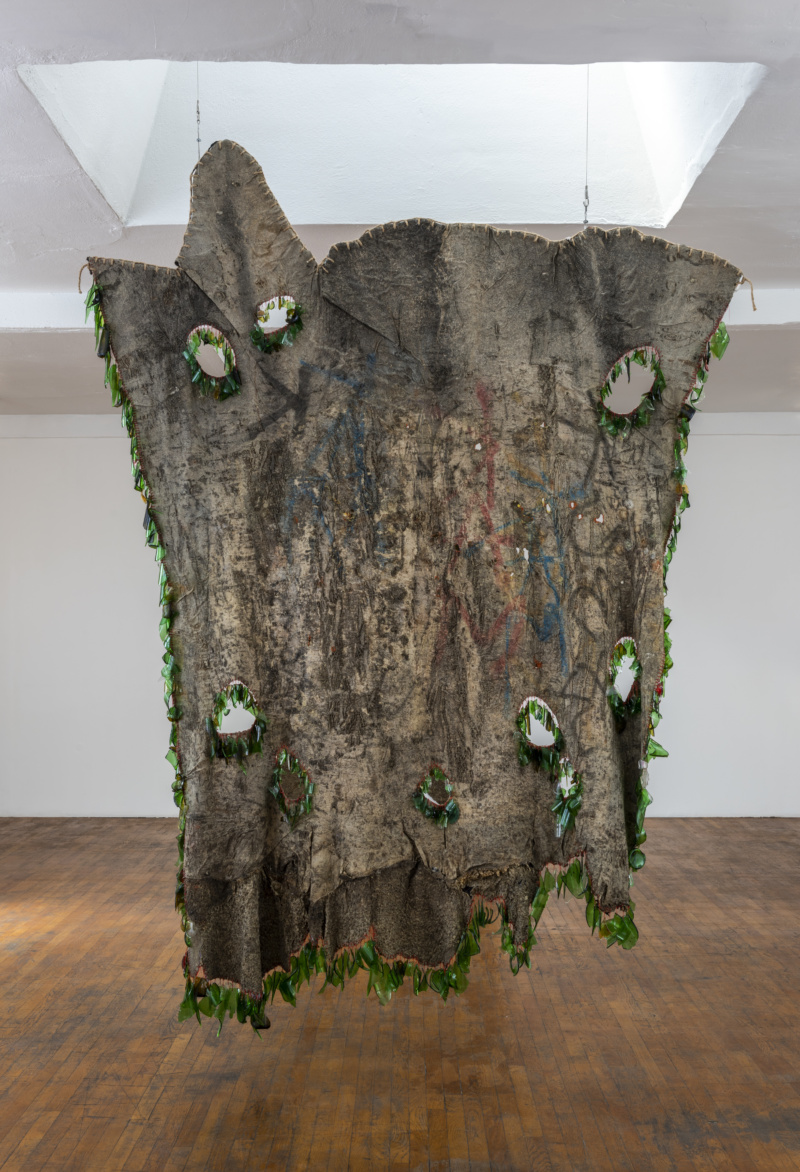
Eddie Rodolfo Aparicio’s work points to the profound oneness of all things, and the deep loss that reverberates when such fundamental truths are disregarded. In a recent series, the artist paints trees in the outer neighborhoods of his native Los Angeles with layers of rubber until the material is thick enough to peel off, at which point it functions almost like a tapestry, having absorbed both the natural and manmade textures of the tree. “A good place to start thinking about the work is the interaction between human mark making and the textures that nature makes, and the ways in which these are connected,” he says. The rubber takes weeks to become structurally integral and Aparicio is there daily, painting layer after layer for hours on end. “The rubber absorbs car exhaust, staples, graffiti and carvings in the tree. I’m interested in the ways in which human carvings happen to the tree, but over time the trunk heals itself and abstracts the marks, and they become hieroglyphics between human marks and the tree’s own growth,” he adds.

“Capturing the surface of these trees is a way of preserving these documents of space in communities where the history of ficus trees—which are all over LA—so closely mirrors the history of Central American and Mexican immigration from the mid-20th century till now,” says Aparicio. “LA planted over 10,000 ficus trees within a short period of time in the 1950s and ’60s. These trees grow tall very quickly and have wide canopies that provide shade and allow cars to pass underneath. They grow so quickly because they have large buttressing roots. These roots break out of the ground and now LA is notorious for its broken sidewalks, so the city is cutting the ficus trees down or replacing them. This idea of utilizing a species for all of these positive benefits but not supplying it with an infrastructure that is appropriate for its growth, and therefore calling for its removal and expulsion, became a stand-in for contemporary immigration and periods of the 20th century in which the US’s involvement in Mexico and Central America perpetuated all of these inhospitable situations,” he explains. Among other projects, Aparicio’s solo exhibition at Los Angeles’s Commonwealth and Council closed in October, he will be included in El Museo del Barrio’s forthcoming “La Trienal” and he’s also working on a commission for Los Angeles State Historic Park










 in your life?
in your life?

